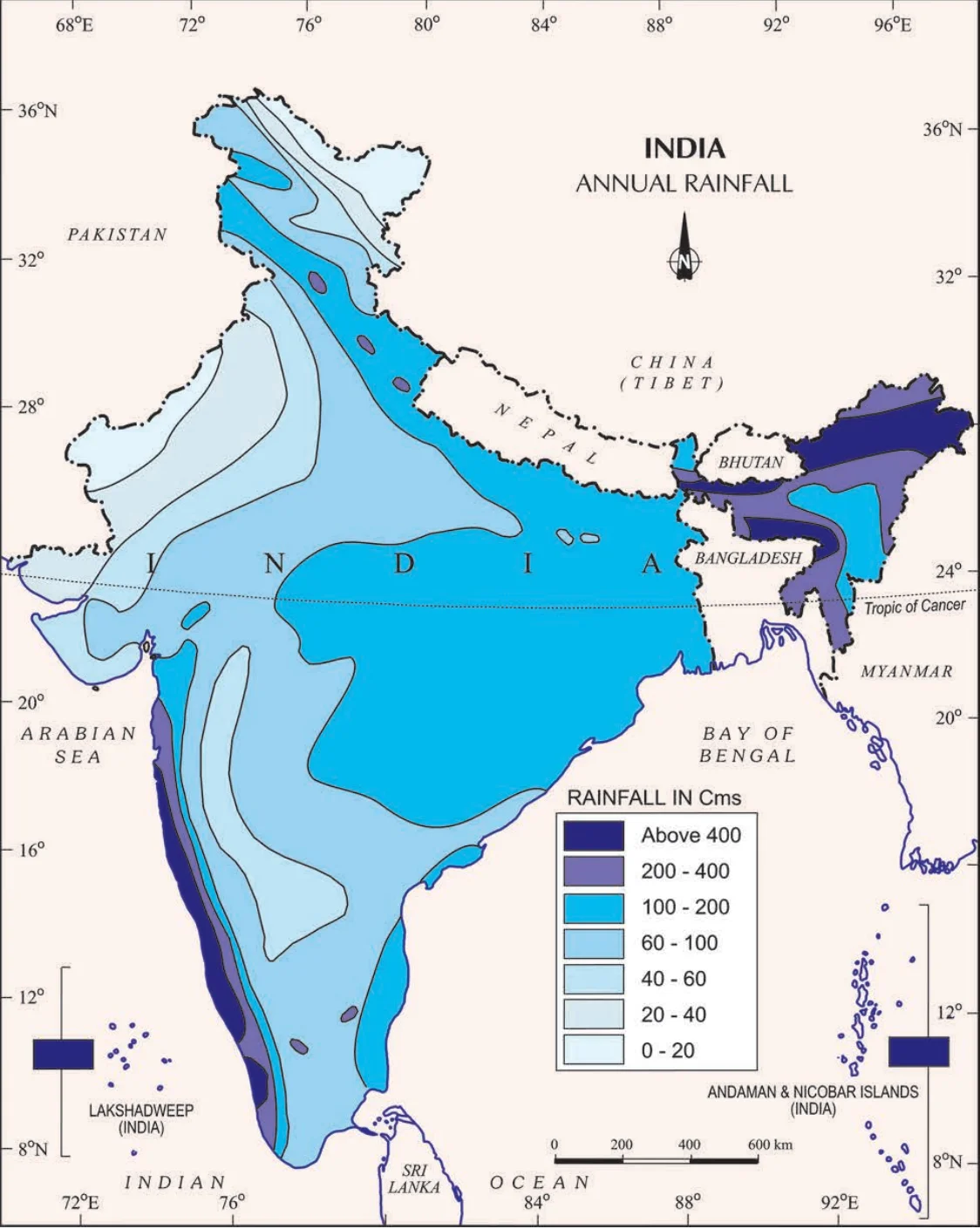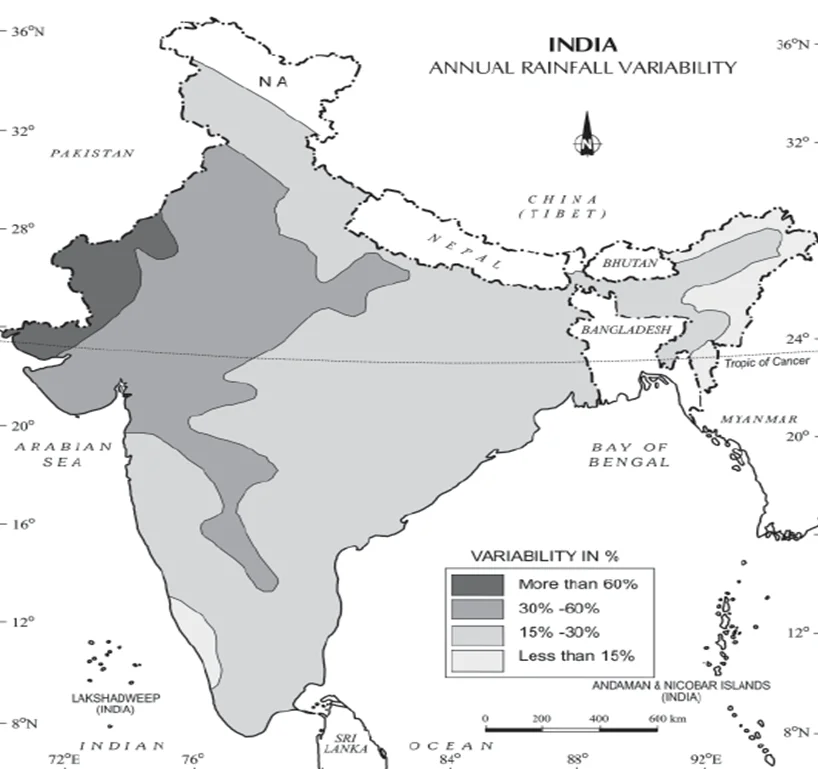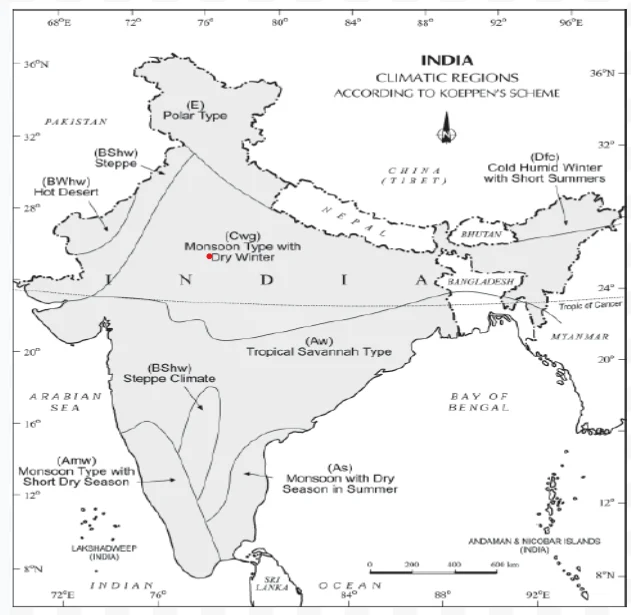![]() December 7, 2023
December 7, 2023
![]() 414
414
![]() 0
0
The distribution of rainfall in India is influenced by various factors, including the monsoon winds, topography, and proximity to water bodies.
India primarily experiences two major monsoon seasons: the southwest monsoon and the northeast monsoon.
Broad overview of the rainfall in India: Zones, Depths, and Himalayan Snowfall

India: Annual Rainfall

A Variability Ranging from 25% to 50%: The remaining parts of India, receiving between 50-100 cm of rainfall in India, (Refer to Figure).

India: Variability of Annual Rainfall

India : Climatic Regions According to Koppen’s Scheme

Table: Climatic Regions of India According to Koeppen’s Scheme
|
Traditional Indian Seasons: In Indian tradition, the year is distinctively divided into six seasons, each lasting two months. This classification, deeply rooted in historical observations, is mainly followed in northern and central India. It doesn’t align with the climatic patterns of south India, where seasonal variations are minimal.
|
|---|
Monsoons and Economic Life in India: India’s Agricultural Tapestry
Global warming: Causes and Consequences of Global Change
|
Glossary
|
|---|
<div class="new-fform">
</div>

Latest Comments